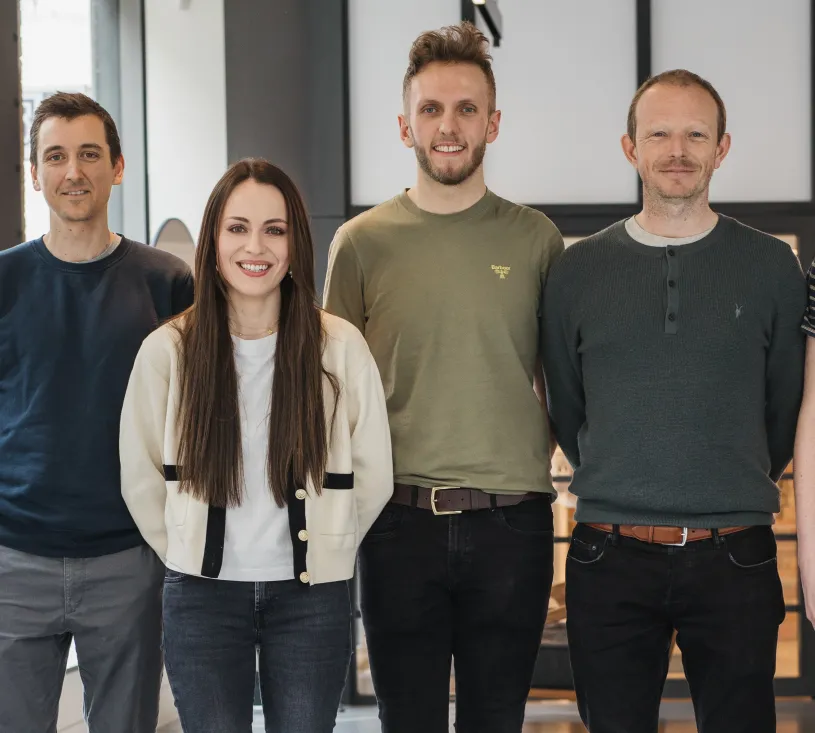
How our customer obsession guides us to product and tech success
Our Edinburgh-based tech team are continously working on exciting products and projects with customer success always at the forefront of their minds.
Keep reading to hear from Product Director Ailsa Simpson how this obsession with customer success drives our tech team to always be innovating and developing.
I’ve been working in the Bright Network Product and Tech team in our Edinburgh office for just over two years, and it’s been refreshing to work at a company where we’re trusted to identify and deliver the best experience for our customers.
We believe that in order to deliver great products it’s essential to create the right environment for a high performing team to thrive. To achieve this we have defined team principles which highlight the value of data-driven decisions, collaboration, autonomy, and psychological safety to enable experimentation without fear of judgement.
With these values and our strong team providing a solid foundation, my challenge, as Product Director, is to identify how to build great products for our customers.
So here are some tactics I use to help me to drive the development of truly valuable products, and here’s a spoiler – I’m obsessed with our customers.
"It's imperative to put yourself in the mind of your customer"
TIP ONE: Empathise with your customers
It’s imperative that before you even think about any product, you put yourself in the mind of your customer. This could mean physically spending time with them to observe what they are doing and understand what makes them happy, what their pain points are and what they want to get done. Of course, at times it’s not possible to meet face to face, in which case video calls are the next best thing.
The objective is to gather enough insight to get to the root of what your customers want to achieve and why it’s important to them. Once you’ve done this you’ll be able to understand the real emotional or practical need that your potential product is fulfilling for them.
Tools: visiting (or video chatting) with your customers, creating your own customer surveys, market research.
TIP TWO: Be open minded as the product takes shape
This sounds a bit counterintuitive - but try not to think too much about what the end product will look like. Speaking from personal experience, I know that it can feel chaotic to approach product development without having a mental model of every detail of the product, but this will prevent you from really thinking objectively as your own bias may cloud your judgement.
Try to think freely! Once you’ve come up with some early wireframes or have a working product you can test these with customers and you’ll quickly learn things that you may have thought you already knew. The other great thing about this approach is that it will empower the team to think of even more innovative solutions than you could have thought of alone and this too will benefit your customer.
Tools: wireframing, user testing, customer interviews.
"Try to think freely! It will empower you to think of more innovative solutions"
TIP THREE: Be humble when you’re gathering feedback
There isn’t really a place for any ego when it comes to customer research and validation. By the time you get to this point you could have spent a few weeks or even months developing what you think is the perfect product to serve your customer, and only one thing is guaranteed - you’ve missed something! This always happens and accepting that this is part of the process rather than admitting defeat or settling with a sub-par product is what will separate your product from the competition.
To bring this step to life - we recently worked on a new customer experience which involved many rounds of user testing. By the time it came to releasing, I was confident that everything was perfect, but unfortunately when release day arrived, the success metrics had a different story to tell! Approaching this with a mindset of experimentation and not being content with what we had until I knew it was meeting the customer’s needs meant that over another few weeks of hard work we were able to make some small tweaks and validate that the product was now a success.
Another thing that this scenario highlights is that you should decide early in the process what your success metric will be. This will keep you honest when things inevitably get tough, and it’ll be worth it in the end when you achieve it. It could be something like time on site, conversion rate, product market fit, customer satisfaction score - anything really, as long as you’re confident that hitting it will mean that you’ve achieved what you want to for your customer.
Tools: qualitative and quantitative metrics (set up front!), usability testing, AB testing.
"There isn’t really a place for any ego when it comes to customer research and validation"
In addition to these points it’s important to have the right mechanisms in place to communicate your common goal effectively. We use Objectives and Key Results (OKRs) to document our common goals, and we follow the Scrum framework as we feel it best aligns with our desire to release frequently, gather feedback, and learn.
Hopefully these tips are interesting and helpful for anyone working in a product development! If you’d ever like to chat about our products, processes, or working at Bright Network then feel free to get in touch, I’d love to hear from you.
We’re regularly hiring for several key and exciting roles within our Edinburgh-based tech team, and might just have a position that suits you! Check below for all our current openings.
